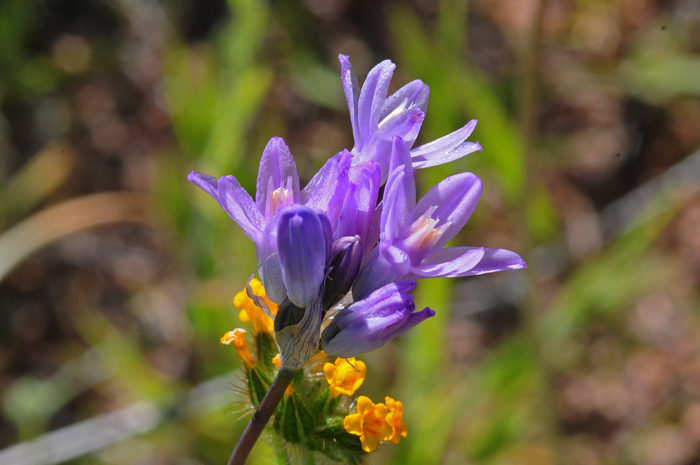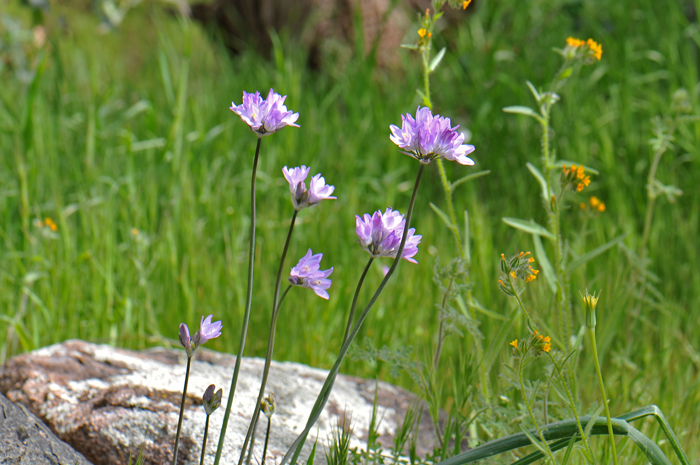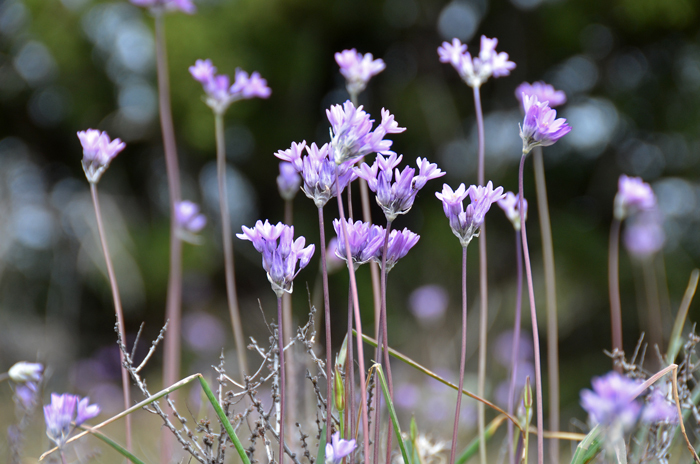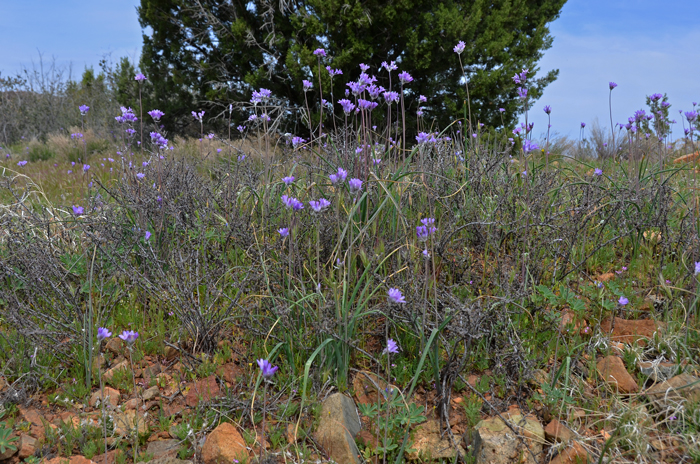Dichelostemma capitatum, Bluedick




Scientific Name: Dichelostemma capitatum
Common Name: Bluedick
Also Called: Blue Dick, Blue Dicks, Bluedicks, Covena, Coveria, Desert Hyacinth, Grass-nuts (Spanish: Cobena, Coveria)
Family: Liliaceae or Lily Family
Synonyms: (Dichelostemma pulchellum)
Status: Native
Duration: Perennial
Size: Up to 27 inches more or less.
Growth Form: Forb/herb; cormlets sessile and on stolons; stems naked.
Leaves: Green; few (2-3) leaves rising directly from the bulbs; leaf blade barely keeled.
Flower Color: Blue, blue-purple, pink-purple, blue-violet or white; inflorescence head or umbel-like structure; 2 to 15 flowers in dense clusters; perianth tube narrowly cylindric, short bell-shaped or short campanulate; stamens 6, smaller 3 on outer perianth parts.
Flowering Season: February to May
Elevation: 0 to 7,000 feet.
Habitat Preferences: Mesas, rocky areas, open slopes, open woodlands, desert scrub, grassland.
Recorded Range: Dichelostemma capitatum is found in the southwestern United States in AZ, CA, NM, NV, OR, UT. It is also native to Baja California and northwestern Mexico.
North America & US County Distribution Map for Dichelostemma capitatum.
U.S. Weed Information: No information available.
Invasive/Noxious Weed Information: No information available.
Wetland Indicator: In North America Dichelostemma capitatum has the following wetland designations:
Arid West; FACU.
Western Mountains, Valleys, and Coast, FACU.
FACU = Facultative Upland, usually occur in non-wetlands, but may occur in wetlands.
Threatened/Endangered Information: No information available.
In the Southwestern United States: Arizona, Nevada, New Mexico and Utah each have 1 species of Dichelostemma, California has 5 species and Texas has 0 species. All data is approximate and subject to taxonomic changes.
There are 2 sub-species in Dichelostemma capitatum;
Dichelostemma capitatum ssp. capitatum , Bluedicks (AZ, CA, NM, NV, OR, UT);
Dichelostemma capitatum ssp. pauciflorum, Bluedicks (AZ, CA, NM, NV, UT).
Comments: Dichelostemma capitatum is a common and often abundant plant found in the southwestern United States. The root structures are corms although often incorrectly referred to as bulbs in the literature. This species is an important food item for western North American indigenous peoples.
Dichelostemma capitatum has been used for food and traded by southern United States indigenous peoples.
See ethno-botanical uses at Native American Ethnobotany, University of Michigan, Dearborn.

